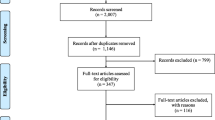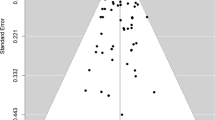Abstract
Promotion of prescription drugs may appear to be severely limited in some jurisdictions due to restrictions on direct-to-consumer advertising (DTCA). However, in most jurisdictions, strategies exist to raise consumer awareness about prescription drugs, notably through the deployment of direct-to-consumer information (DTCI) campaigns that encourage patients to seek help for particular medical conditions. In Canada, DTCI is presented by industry and regulated by Health Canada as being purely informational activities, but their design and integration in broader promotional campaigns raise very similar ethical concerns as those associated with DTCA. Specifically, DTCI can be an effective means of familiarizing the public with the scope and benefits of a particular prescription drug and so, like DTCA, can promote increased patient-consumer demand and thus a problematic rise in the prescribing and use of medications that may be neither the most appropriate nor the most cost-effective. Yet, with DTCI the industry is playing within the existing rules and regulations set by health regulators. To respond appropriately to this regulatory incoherence, we argue that DTCI should be regulated as a type of direct-to-consumer indirect advertising. Even if the case and specific regulations presented here are Canadian, the implications extend to every country that has a partial or total prohibition on DTCA.
Similar content being viewed by others
References
Abraham, J. 2010. Pharmaceuticalization of society in context: Theoretical, empirical and health dimensions. Sociology 44(4): 603–622. doi:10.1177/0038038510369368.
Althof, S.E. 2006. Sexual therapy in the age of pharmacotherapy. Annual Review of Sex Research 17(1): 116–131.
Arnold, D., and J.L. Oakley. 2013. The politics and strategy of industry self-regulation: The pharmaceutical industry’s principles for ethical direct-to-consumer advertising as a deceptive blocking strategy. Journal of Health Politics, Policy and Law 38(3): 505–544. doi:10.1215/03616878-2079496.
ASC Clearance Services. 2011. DTCI guide. Toronto: Advertising Standards Canada.
Atkin, J.L., and R.F. Beltramini. 2007. Exploring the perceived believability of DTC advertising in the US. Journal of Marketing Communications 13(3): 169–180. doi:10.1080/13527260701250695.
Belch, G., and M. Belch. 2008. Advertising and promotion: An integrated marketing communications perspective, 8th ed. New York: McGraw Hill.
Bell, S.E., and A.E. Figert. 2012. Medicalization and pharmaceuticalization at the intersections: Looking backward, sideways and forward. Social Science and Medicine 75(5): 775–783. doi:10.1016/j.socscimed.2012.04.002.
Berry, M.D. 2012. Historical revolutions in sex therapy: A critical examination of men’s sexual dysfunctions and their treatment. Journal of Sex and Marital Therapy 39(1): 21–39. doi:10.1080/0092623x.2011.611218.
Biegler, P., and P. Vargas. 2013. Ban the sunset? Nonpropositional content and regulation of pharmaceutical advertising. The American Journal of Bioethics 13(5): 3–13. doi:10.1080/15265161.2013.776127.
Briñol, P., R.E. Petty, and Z.L. Tormala. 2004. Self-validation of cognitive responses to advertisements. Journal of Consumer Research 30(4): 559–573. doi:10.1086/380289.
Cetel, J.S. 2012. Disease-branding and drug-mongering: Could pharmaceutical industry promotional practices result in tort liability. Seton Hall Law Review 42: 643–702.
Cunningham, D.J., and R. Iyer. 2005. Does DTC mean “direct to court”? Journal of Consumer Marketing 22(7): 412–420.
Eli Lilly Canada Inc. 2011. 40over40. http://40over40.ca. Accessed November 8, 2014.
Eli Lilly Canada Inc. 2014. 40over40: Symptoms: Take this self-assessment quiz to find out if you may have ED. http://40over40.ca/symptoms.php. Accessed May 28, 2014.
Flowers, C.R., and K.L. Melmon. 1999. Clinical champions as critical determinants of drug develpment. In Pharmaceutical innovation: Revolutionizing human health, edited by R. Landau, B. Achilladelis, and A. Scriabine, 331–372. Philadelphia: Chemical Heritage Foundation.
Gardner, D.M., B. Mintzes, and A. Ostry. 2003. Direct-to-consumer prescription drug advertising in Canada: Permission by default? Canadian Medical Association Journal 169(5): 425–427.
Government of Canada. 2015. Food and Drug Regulations C.R.C., c. 870. Ottawa: Ministry of Justice.
Health Canada. 2005. The distinction between advertising and other activities. Ottawa: Government of Canada.
Henderson, G.E., L.R. Churchill, A.M. Davis, et al. 2007. Clinical trials and medical care: Defining the therapeutic misconception.” PLoS Med 4(11): e324. doi:10.1371/journal.pmed.0040324.
Hollon, M.F. 1999. Direct-to-consumer marketing of prescription drugs. The Journal of the American Medical Association 281(4): 382–384.
Holmer, A.F. 1999. Direct-to-consumer prescription drug advertising builds bridges between patients and physicians. The Journal of the American Medical Association 281(4): 380–382.
Hughes-Morgan, M., J.L. Kendrick, F.W. Morgan, and J.J. Stoltman. 2010. Strategic change within the pharmaceutical industry: The impact of direct-to-consumer advertising for prescription medicines. International Journal of Information Systems and Change Management 4(3): 246–257. doi:10.1504/ijiscm.2010.033078.
Jones, I.R., and P.F. Higgs. 2010. The natural, the normal and the normative: Contested terrains in ageing and old age. Social Science and Medicine 71(8): 1513–1519. doi:10.1016/j.socscimed.2010.07.022.
Karlowicz, K.A. 2009. Direct-to-consumer advertising for erectile dysfunction drugs. Urologic Nursing 29(4): 214.
Kessler, D.A., and D.A. Levy. 2007. Direct-to-consumer advertising: Is it too late to manage the risks? The Annals of Family Medicine 5(1): 4–5.
Limbu, Y.A.M., and I.M. Torres. 2009. The effects of involvement and ad type on attitudes toward direct-to-consumer advertising of prescription drugs. Journal of Health and Human Services Administration 32(1): 107–138. doi:10.2307/25790753.
Marshall, B.L. 2010. Science, medicine and virility surveillance: “Sexy seniors” in the pharmaceutical imagination. Sociology of Health and Illness 32(2): 211–224. doi:10.1111/j.1467-9566.2009.01211.x.
Mintzes, B. 2006. Disease mongering in drug promotion: Do governments have a regulatory role?” PLoS Med 3(4): e198. doi:10.1371/journal.pmed.0030198.
Mintzes, B., S. Morgan, and J.M. Wright. 2009. Twelve years’ experience with direct-to-consumer advertising of prescription drugs in Canada: A cautionary tale.” PLoS One 4(5): e5699. doi:10.1371/journal.pone.0005699.
Ofek, E., and M. Sarvary. 2003. R&D, marketing, and the success of next-generation products. Marketing Science 22(3): 355–370. doi:10.2307/4129745.
Peyrot, M., N.M. Alperstein, D. Van Doren, and L.G. Poli. 1998. Direct-to-consumer ads can influence behavior: Advertising increases consumer knowledge and prescription drug requests. Marketing Health Services 18(2): 26–32.
Stange, K.C. 2007. Time to ban direct-to-consumer prescription drug marketing. The Annals of Family Medicine 5(2): 101–104.
Waldinger, M.D. 2008. Not medical solutions, but overmedicalization by pharmaceutical company policies endanger both sexological care, science, and sexual medicine: A commentary. Journal of Sex and Marital Therapy 34(3): 179–183. doi:10.1080/00926230701866406.
Wong-Rieger, D. 2009. Should Canada allow direct-to-consumer advertising of prescription drugs? Canadian Family Physician 55(2): 130–132.
Acknowledgements
We would like to thank Jean-François Bélisle, Charles Dupras, and Isabelle Ganache for their helpful comments and suggestions on earlier drafts of the manuscript.
Funding
Bélisle-Pipon is supported by Ph.D. scholarships from the Institut de recherche en santé publique de l’Université de Montréal (IRSPUM), the Centre de recherche en éthique (CRÉ), and the Fonds de recherche du Québec–Santé (FRQ-S) & Unité SOUTIEN-SRAP du Québec. Williams-Jones’ research is funded by the Social Sciences and Humanities Research Council of Canada (SSHRC) and the Canadian Institutes of Health Research (CIHR).
Author information
Authors and Affiliations
Corresponding author
Rights and permissions
About this article
Cite this article
Bélisle-Pipon, JC., Williams-Jones, B. Drug Familiarization and Therapeutic Misconception Via Direct-to-Consumer Information. Bioethical Inquiry 12, 259–267 (2015). https://doi.org/10.1007/s11673-015-9634-8
Received:
Accepted:
Published:
Issue Date:
DOI: https://doi.org/10.1007/s11673-015-9634-8




